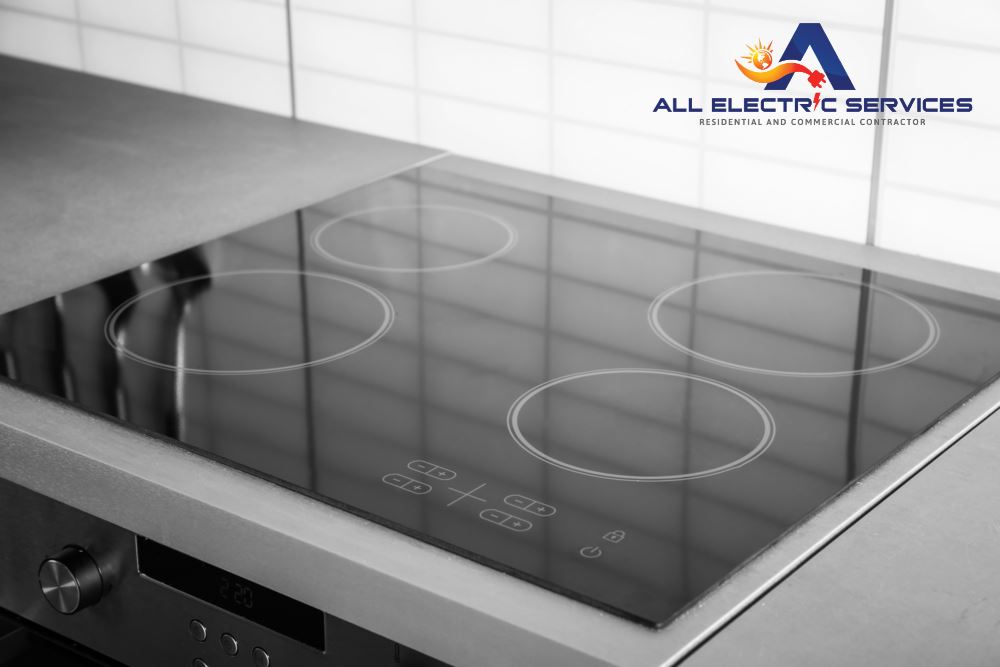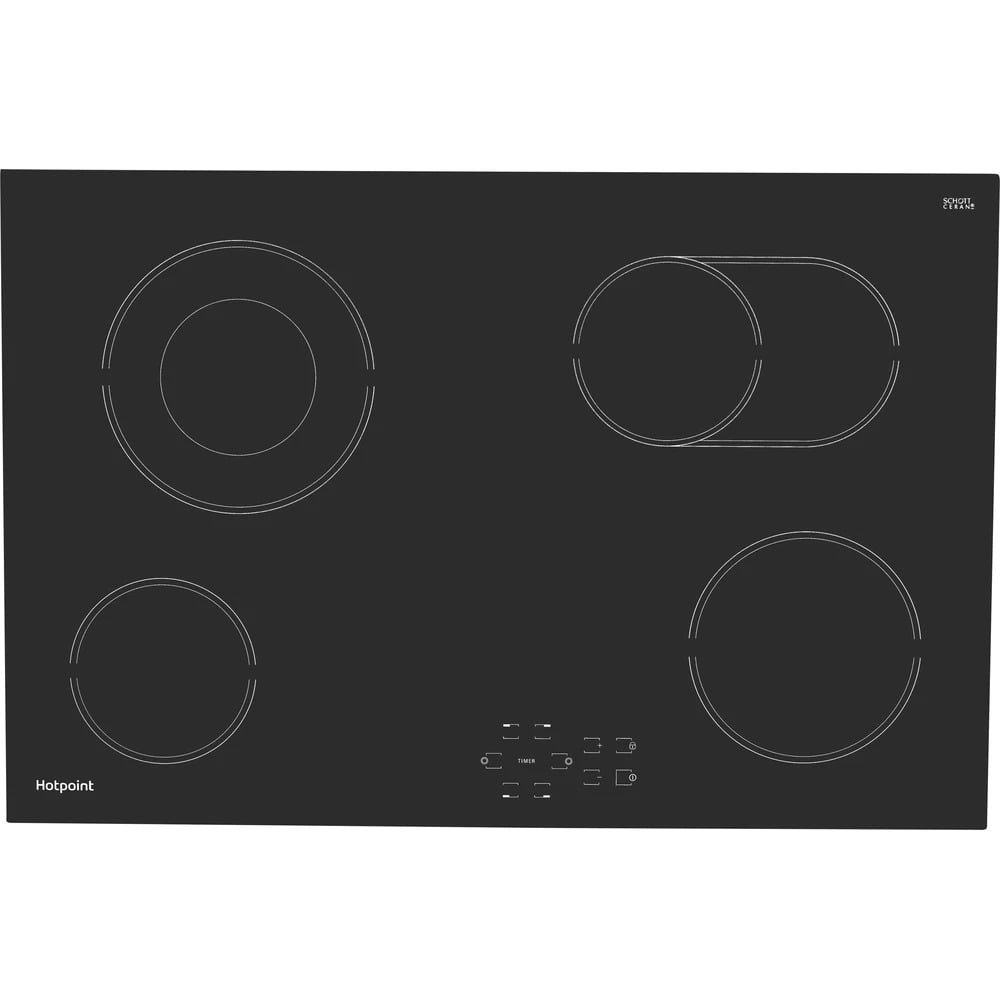As an Amazon Associate KitchenwareSets.com earns from qualifying purchases.
Can I Plug My Electric Range Into a Standard 110V Outlet?
Are you puzzling over whether your kitchen needs 110 or 220 volts for that new cooktop? You’re not alone – this common confusion can lead to costly mistakes and installation headaches.
Many homeowners find themselves standing in appliance stores, wondering if their kitchen’s electrical setup can handle their dream cooktop. The wrong choice could mean expensive electrical upgrades or returning a non-compatible appliance.
Most electric cooktops require 220 volts for optimal performance, while portable or smaller units may run on 110 volts. The voltage requirement depends on the cooktop type, size, and power needs.
As a certified kitchen appliance specialist with over 10 years of experience installing various cooktop types, I’ll guide you through everything you need to know about cooktop voltage requirements. In this comprehensive guide, you’ll discover not just which voltage your cooktop needs, but also how to identify your current setup, understand the differences between voltage options, and determine if you’ll need an electrical upgrade.
Key Facts:
- Standard electric ranges and built-in cooktops typically require 220-240V power supply
- Portable and countertop induction cooktops often operate on standard 110-120V outlets
- Converting from 110V to 220V typically costs between $300-$800
- Electric cooktops running on 220V can generate up to 3 times more heat than 110V models
- Professional installation is required for 220V cooktop installation due to safety regulations
What Voltage Do Electric Ranges and Cooktops Need?
Electric ranges and cooktops typically require specific voltage levels to operate safely and efficiently. Most full-size electric ranges and built-in cooktops require 220-240 volts, while some smaller, portable units can operate on standard 110-120 volt circuits.

Modern electric range requiring 220V power – [Source: All Electric Services]
The voltage requirement depends on several factors:
- Size of the cooktop
- Number of cooking elements
- Maximum power output needed
- Intended use (residential vs. commercial)
Power Requirements for Different Cooktop Types
| Cooktop Type | Voltage Required | Typical Circuit Size |
|---|---|---|
| Standard Electric Range | 220-240V | 40-50 amp |
| Built-in Electric Cooktop | 220-240V | 30-50 amp |
| Portable Induction | 110-120V | 15-20 amp |
| Small Countertop Unit | 110-120V | 15 amp |
Key Takeaway: Before purchasing any cooktop, verify your home’s electrical capacity and ensure it matches the appliance’s requirements.
Are Cooktops 110 or 220 Volts?
The answer depends on the type and size of your cooktop. Full-size electric cooktops typically require 220 volts, while portable units often run on 110 volts. This distinction is crucial for proper installation and operation.
According to All Electric Services, most modern electric ranges and built-in cooktops require 220V power because they need more electricity to generate sufficient heat for cooking.
Different types of cooktops have varying voltage requirements:
- Full-Size Electric Ranges:
- Require 220-240V
- Need dedicated circuits
- Higher power output capability
- Portable/Countertop Units:
- Usually run on 110-120V
- Can plug into standard outlets
- Limited power output
- Induction Cooktops:
- Vary based on size and model
- Professional units need 220V
- Portable units often use 110V

Professional-grade cooktop requiring 220V connection
How Can I Tell if My Kitchen Has 110V or 220V Outlets?
Identifying your kitchen’s electrical outlet type is crucial before purchasing a new cooktop. Here’s how to determine what you have:
- Visual Inspection:
- 220V outlets are larger
- Usually have unique configurations
- Often have 3-4 prong designs
- Circuit Breaker Check:
- 220V requires double-pole breaker
- Takes up two spaces in panel
- Usually rated 30-50 amps
Learn more about proper electrical outlet requirements for electric stoves.
Key Takeaway: When in doubt, consult a licensed electrician to verify your outlet type and ensure safe installation.
What’s the Difference Between 110V and 220V Cooktops?
Understanding the key differences between 110V and 220V cooktops helps make an informed purchase decision:
Performance Comparison
| Feature | 110V Cooktops | 220V Cooktops |
|---|---|---|
| Heating Power | Lower | Higher |
| Cook Time | Slower | Faster |
| Energy Efficiency | Less efficient | More efficient |
| Installation Cost | Lower | Higher |
For a detailed comparison of cooktop types and their power requirements, check out our guide on what are the four types of cooktops.
Why Do Most Electric Ranges Require 220V?
Electric ranges typically require 220V power for several important reasons:
- Higher Power Output:
- More heating capability
- Faster cooking times
- Better temperature control
- Energy Efficiency:
- More efficient power usage
- Lower operating costs
- Better performance
Learn more about the benefits of different power sources in our article about whether gas or electric cooktops are better.
Can I Use a Regular 110V Outlet for My Electric Range?
No, you cannot safely use a standard 110V outlet for a full-size electric range designed for 220V. Attempting to do so could damage your appliance and create safety hazards.

Portable induction cooktop suitable for 110V outlets
Alternative options include:
– Portable induction cooktops
– Small countertop units
– Converting to a 220V outlet
What Should I Know About Upgrading from 110V to 220V?
Upgrading from a 110V to a 220V electrical system requires professional installation, permits, and typically costs between $300-$800. This upgrade involves installing new wiring, a dedicated circuit breaker, and the appropriate outlet.
Installation Requirements
- Professional Assessment:
- Licensed electrician inspection
- Evaluation of existing electrical panel
- Load calculation for your home
- Code compliance check
- Necessary Components:
- Double-pole circuit breaker
- Heavy-gauge wiring
- Specialized 220V outlet
- Updated electrical panel (if needed)
Cost Breakdown
| Component | Estimated Cost |
|---|---|
| Electrician Labor | $200-$400 |
| Materials | $100-$200 |
| Permits | $50-$150 |
| Panel Upgrades (if needed) | $200-$500 |
Key Takeaway: While upgrading to 220V represents a significant investment, it’s essential for operating full-size electric cooktops efficiently and safely.
Timeline Expectations
The upgrade process typically involves:
- Initial Assessment: 1-2 days
- Site inspection
- Cost estimation
- Permit application
- Installation: 1-3 days
- Wiring installation
- Outlet placement
- Circuit breaker installation
- Inspection: 1-2 days
- Local code compliance check
- Safety verification
- Final approval
For a better understanding of cooktop installation requirements, check out our guide on how induction cooktops work.
Professional vs DIY Considerations
Professional Installation:
– Required by most local codes
– Ensures safety compliance
– Includes proper permits
– Provides warranty protection
– Guarantees proper installation
DIY Risks:
– Safety hazards
– Code violations
– Insurance issues
– Potential appliance damage
– Void warranties

Professional installation of a 220V electric range – [Source: Shockley Electric]
According to Shockley Electric, attempting DIY installation of 220V circuits can be extremely dangerous and may violate local building codes. Always consult a licensed electrician for these upgrades.
How Do Different Cooktop Types Affect Voltage Requirements?
Different cooktop types have varying voltage requirements based on their technology and power needs. Understanding these differences is crucial for selecting the right cooktop for your kitchen setup.
Electric Cooktop Needs
Standard electric cooktops typically require:
– 220-240V power supply
– 30-50 amp dedicated circuit
– Special 4-prong outlet
– Professional installation
For more detailed information about cooktop options, explore our guide on what size cooktop is best.
Induction Cooktop Requirements
Induction cooktops vary in their power needs:
- Built-in Models:
- Usually require 220-240V
- High-efficiency operation
- Rapid heating capability
- Portable Units:
- Often run on 110-120V
- Plug into standard outlets
- Limited power output
According to iRV2 Forums, portable induction units can be an excellent option for those without 220V outlets.

Portable induction cooktop suitable for standard 110V outlets
Portable Unit Options
Portable cooktops offer flexibility:
– Single or double burner options
– 110V compatibility
– No installation required
– Perfect for small spaces
– Ideal for temporary cooking needs
Key Takeaway: Choose your cooktop type based on both your cooking needs and available electrical infrastructure.
Hybrid Solutions
Some kitchens utilize hybrid solutions:
1. Mixed Voltage Setup:
– Main cooktop on 220V
– Portable units on 110V
– Flexibility for different needs
- Temporary Arrangements:
- Portable units during renovation
- Supplementary cooking surfaces
- Emergency backup options
Learn more about different cooktop technologies in our article about what is a hob in cooktop.
Voltage Requirements by Region
Different regions may have varying standard voltages:
| Region | Standard Voltage | Common Cooktop Voltage |
|---|---|---|
| North America | 110-120V/220-240V | 220-240V |
| Europe | 220-240V | 220-240V |
| Asia | Varies by country | 220-240V |
| Australia | 230-240V | 230-240V |
According to 220 Electronics, voltage requirements can significantly impact appliance compatibility when moving between regions.
Safety Considerations for Different Voltages
When dealing with different voltage systems, consider:
- Circuit Protection:
- Proper breaker sizing
- Ground fault protection
- Surge protection
- Regular inspections
- Installation Safety:
- Professional installation required
- Code compliance
- Proper grounding
- Regular maintenance
- Usage Safety:
- Proper outlet usage
- Load management
- Emergency procedures
- Regular testing
Key Takeaway: Safety should always be the primary consideration when choosing and installing any electrical appliance.
FAQs About Cooktop Voltage Requirements:
Q: Do all electric cooktops require 220V?
A: No, not all electric cooktops require 220V. While full-size electric ranges and built-in cooktops typically need 220V, portable and countertop units often run on standard 110V power.
Q: Can I install a 220V outlet myself?
A: No, 220V outlet installation should always be performed by a licensed electrician due to safety requirements and local building codes.
Q: How much does it cost to upgrade from 110V to 220V?
A: The cost typically ranges from $300 to $800, depending on your location and existing electrical setup.
Summary:
Understanding cooktop voltage requirements is crucial for safe and efficient kitchen appliance installation. While most full-size electric ranges and cooktops require 220V power, portable and countertop units can operate on standard 110V circuits. The choice between 110V and 220V depends on your cooking needs, existing electrical setup, and budget considerations.
Before purchasing a new cooktop, verify your kitchen’s electrical capacity and consult a licensed electrician if upgrades are needed. This ensures both safety and optimal performance of your cooking appliance. Remember, proper voltage matching isn’t just about convenience—it’s about safety and getting the most out of your kitchen investment.
